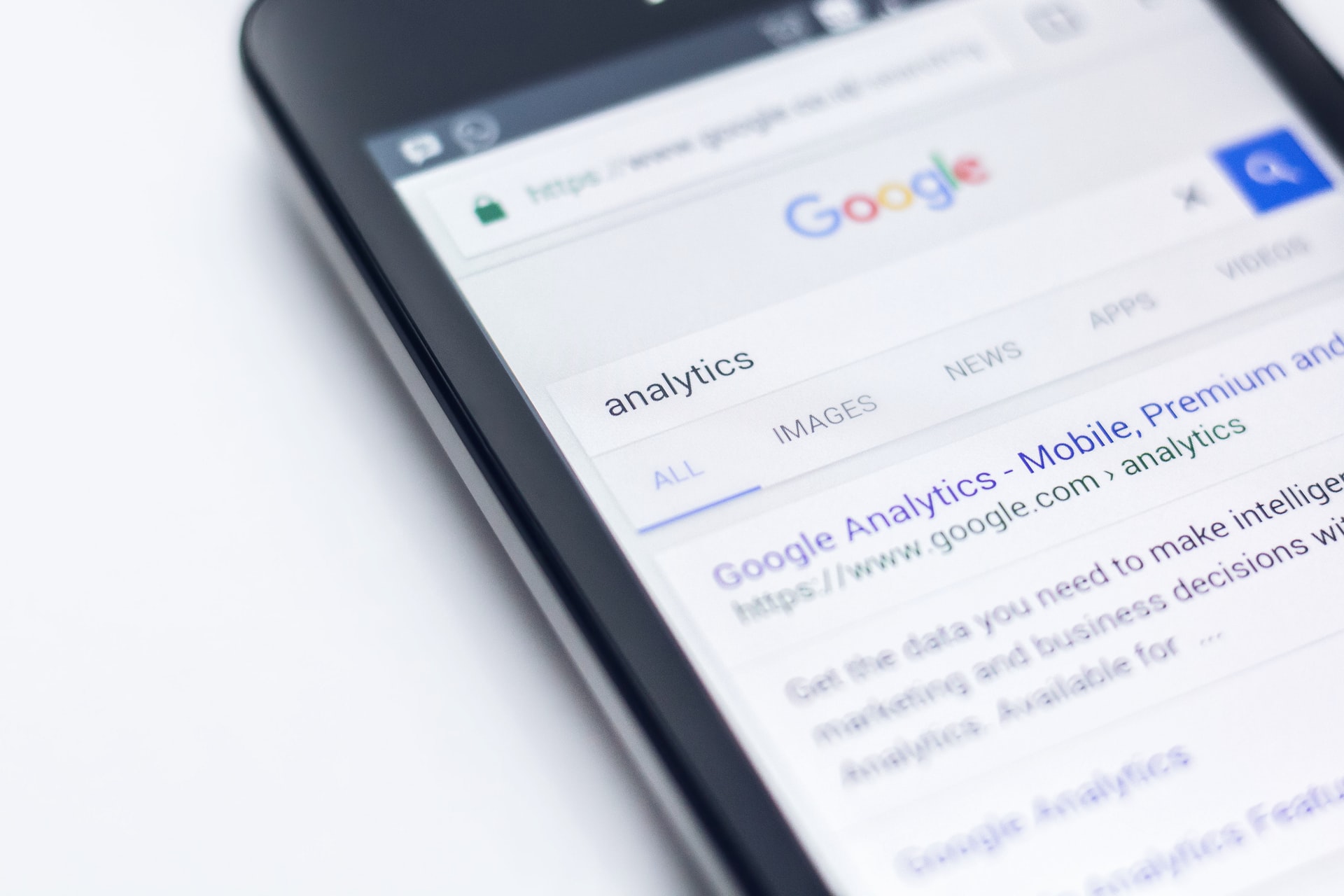Whether you are selling hair trimmers or a bungalow, PPC ads are a great way to attract the right customers at the right price. Google Ads experts recommend this tactic, as businesses generally earn back a minimum of $2 for every dollar spent. You’ll need a good PPC strategy to beat your competitors, and drive quality traffic with better chances of conversion.
We’ll help you find out why your PPC campaigns may not be performing well, and what you can do to improve results. But first, let’s take a look at what PPC advertising actually is.
What is PPC advertising?
PPC (pay-per-click) is an advertising strategy where you pay every time one of your ads is clicked. Simple, right? PPC ads use relevance and bidding to decide whose ad to show for a related search term or keyword. Essentially, it’s like paying to get people to visit your site, rather than relying on organic traffic.
How PPC Works

Figure 1: Typical PPC campaign example, Source: EvoCreative
Marketers bid on keywords that trigger their ads to appear. For example, a business selling smartphones can bid on keywords and phrases like “buy smartphone,” “smartphone discounts,” or “X brand smartphones.” A user looking to buy a new mobile will enter a search term like “smartphones for sale” to find businesses selling the phone. At this moment, the search engine takes into consideration the ad auction algorithms to decide which ads appear in which order. As you pay per click, most marketers only bid on keywords related to their products or services. We will discuss later how you can optimize your ads to gain better visibility.
Google Ads Rule the PPC Market
Google is the champion of PPC, with the majority of the global search engine market share. Bing doesn’t even come close with a 3.92% share when you include Yahoo search. Google Ads also has a huge network called Adsense that has more than 12 million websites to feature your ads. Bing also has a partner network, but with much lesser coverage.

Probable problems with your PPC campaigns
Managing PPC campaigns and generating conversions is not easy. You may experience:
Poor performance: Your ads don’t bring the returns you expect. Ads can perform poorly for multiple reasons, including choosing the wrong keywords or inadequate ad copy. You need to dive deep to uncover the flaws.
Lack of clicks: PPC saves money by charging you per click – you won’t pay for anything other than results. However, your campaign can fail if you don’t get enough clicks. Many reasons can contribute to this and you’ll need to conduct analysis to find out what you’re missing. Common causes may include poor ad copy, irrelevant keywords, or other hidden issues.
Wasteful spend: Your budget may not be bringing the expected returns. This needs thorough investigation to determine the root cause. One reason might be spending too much on keywords that don’t bring in any leads, for you or your competitors. You need to address the issues to make the most of your budget.
Low conversions: PPC can help you increase traffic to your landing page. However, PPC doesn’t guarantee you will have a set conversion rate. Your ads may not convert for a number of reasons that are not related to the ads themselves. For example, a badly-constructed landing page can discourage your PPC traffic from clicking the “buy now” button.

How to improve the performance of your PPC campaigns
a. Create a strong account structure
Your PPC account structure helps you manage your campaigns. The ad groups are perfect for sorting your keywords and ads mirroring your website structure or granular theme. However, having too many keywords or ads can mess up your workflow and lead to inefficiencies.
How many keywords in each ad group?
It’s always best to theme your keywords for each ad group. There’s no rule of thumb, but try to have no more than 10 – 15 keywords in each ad group, with 20 as an absolute maximum. Consider going granular for better management and optimization. For example, you could have a broad keyword like “shirts”. However, you can create a separate ad group for “denim shirts,” “party shirts,” and “casual shirts.” Of course, your theming will be based on your product line. Don’t use keywords that aren’t relevant to your brand.
How many ads in each ad group?
Most PPC marketing experts recommend experimenting with 2 – 3 ad variations in each group. You can bring out your different USPs for each ad’s content. Having fewer ads helps you test and monitor each ad’s performance easily.
Relevancy
This is a no-brainer. Your keywords should be relevant to each other and the ads in each group. You don’t want to attract the wrong traffic and mess up your CTR. This will also cause potential customers to be turned off your brand in future.

b. Think about your keywords
The keywords you choose have a direct effect on the performance of your PPC ads. Here are some tips to help you get the most out of your keywords.
Target high-performing keywords
Not all keywords perform the same. Some will always stand out as high-performing ones. Identify your best keywords and create dedicated ad groups with them. You can consider a keyword high-performing if:
- The CTR is more than the account average
- The conversion rate surpasses the account average
- The cost is less than your target CPA
Include negative keywords
Negative keywords make sure you don’t waste your budget unnecessarily. Including negative keywords prevents your ads from appearing in irrelevant searches. This helps you ensure you get relevant traffic that is optimized for better conversions. Identify negative keywords during your keyword research and include them in your ad groups. For example, a company that sells hard copies of greeting cards can include negative keywords like “greeting card download” or “greeting card template.”
Pause low-performing keywords
Pause low-performing keywords to save your budget and quality score. However, give adequate time for keywords to accumulate enough data to make conclusions. Also, try to determine why an ad is not performing up to the mark.

c. Use single keyword ad groups (SKAGs)
Creating single keyword ad groups is one of the best paid marketing strategies that will improve the performance of PPC ads. To put it simply, you create an ad group with a single keyword and a few ad variations. The highly-specific targeting makes sure your ads don’t appear anywhere they aren’t supposed to. SKAGs are great to ensure every search term matches a keyword for super relevancy. Needless to say, using SKAGs can increase your CTR by 28.1%, according to statistics from CXL. Run tests on different ad copies to determine the best combination, then select 3 – 4 of your top USPs and test each ad copy to find what resonates with your audience. Finally, make small changes to your ad copy to improve performance. You can experiment with the following options:
- Seasonal taglines
- Displaying your brand logo or trademark in ads
- Writing the headline with the first letter of every word in capitals
- Variations or synonyms of words
- Experimentation with different punctuation
- Dynamic keyword insertion
- Localized keywords
- Getting creative and try your own improvements in ad copies
d. Stay updated on analytics
How will you know if your ads work if you don’t track their performance? Doing all the hard work and not tracking results is a surefire way to waste your ad budget. Use the analytics from your Google Ads dashboard to see what your ads are up to. You can analyze several metrics based on broad categories to determine the effectiveness of your campaigns. Google Ads lets you track:
- Traffic-based metrics: Click-through rate (CTR), quality score, and clicks
- Conversion-based metrics: conversion rate and cost per conversion
- ROI-based metrics: customer lead tracking, dynamic revenue tracking and call tracking
Integrate Google Ads with Google Analytics
You can use Google Analytics to generate better insights about your Google Ads performance. A simple auto-tagging of ads leads to detailed reports in your Analytics account. You can also view extensive stats and do tasks like segmenting behavior to learn more about your target audience.
The integration will even allow you to use smart lists to sort your site users and track actions generated by your ad keywords. You can gain insight into each of your keywords or copy that generated the click to refine your campaigns. Always track how your ads perform to improve your copy, keywords, and ad spend.

Want to perfect your paid ads?
There are lot of paid advertising strategies you can use, and it can be hard to choose the right one. But don’t worry! We’ll help you invest your ad spend wisely with our guide – Paid Advertising 101: How to Grow Your Business With the Right Ads.
Optimizing PPC ads requires technical and industry knowledge. Unless you are familiar with the nuances of PPC, your campaigns may fail to bring the expected results.
You need guidance from Google Ads experts with years of experience, and this is all available here at Growth Marketing Genie. Our advertisers set up the perfect campaign with everything ticking the boxes to drive more conversions.
Get in touch with us to improve your PPC performance, and generate a positive return.
Book in a Free Consultation
